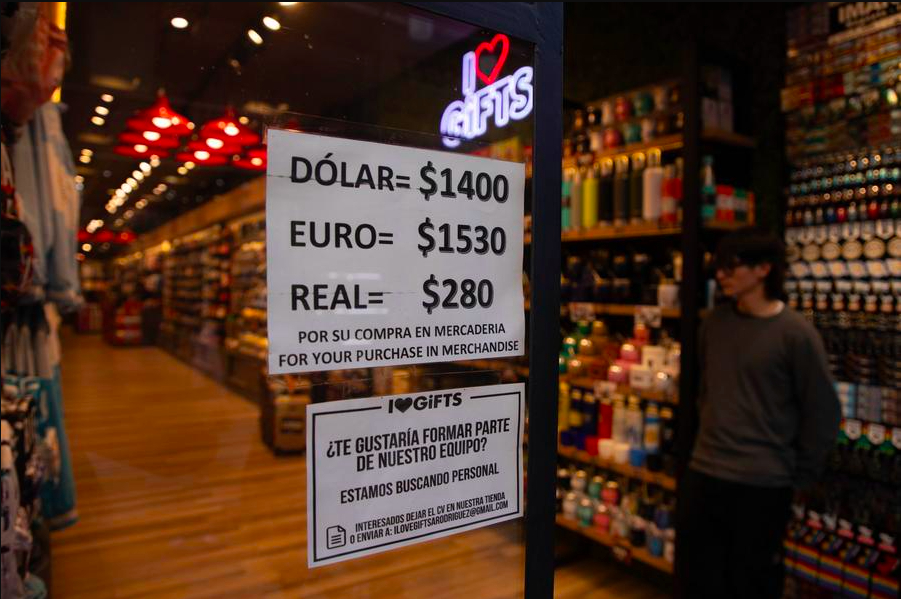
Published 07/15/2024 17:30 | Edited 07/15/2024 18:37
Starting this Monday (15), the Central Bank of Argentina (BCRA) began selling US dollars in the country’s parallel exchange markets. On Saturday, the government announced a new strategy to combat the growing gap between the official exchange rate of the Argentine peso and parallel rates, such as the blue dollar, with the aim of stabilizing the country’s economy. This decision has generated diverse opinions and it is important to understand what is behind this measure and what its consequences may be.
According to Eduardo Crespo, an Argentine economist and professor at UFRJ consulted by Red Portal“are losing their way in economic policy.” Crespo points out that while selling dollars may temporarily reduce the exchange rate gap, it also depletes the country’s reserves. “Reserves that are coming in on one side are going out on the other,” he said.

Eduardo Crespo expressed a critical view of the measure. He believes that this strategy is a desperate attempt to avoid a new devaluation of the peso, but warns of long-term risks. “It is a short-term idea, which in the long term is a bad decision, because it compromises the process of accumulating reserves,” he said. He also mentioned that the intervention in the market could generate uncertainty and negatively affect Argentine bonds.
“What we can see in today’s initial quotes, at least, is that along with the fall in the parallel dollar, Argentine bonds are falling, which generates uncertainty,” observes the economist.
Read also: With GDP down 5.1%, recession accelerates in Argentina along with fiscal adjustment
Worse than the recession is the currency crisis that Milei faces in Argentina
Recession in Argentina shakes the domestic market, despite fiscal surplus
What is happening?
Argentina’s economy is going through a period of great instability, with annual inflation of 272% – one of the highest in the world. In addition, there is a large difference between the official exchange rate and the rates practiced on the parallel market, such as the blue dollar. Currently, the official rate is 919 pesos per dollar, while the blue dollar reached 1,405 pesos per dollar last Friday.
In an attempt to reduce this gap and stabilize the economy, the Central Bank decided to sell dollars on the parallel market, known as CCL (contado con liquidación). According to Economy Minister Luis Caputo, this measure is part of a “deepening of the monetary framework.”
How does the measure work?
When the Central Bank buys dollars on the official market, it needs to issue pesos. The new strategy involves offsetting this peso issuance by selling an equivalent amount of dollars on the parallel market. The idea is that by doing so, the amount of pesos in circulation will be reduced, which should help to narrow the gap between the official and parallel exchange rates.
Luis Caputo explained on his social media that “if the Central Bank buys dollars on the official exchange market, the equivalent issuance of pesos will be cancelled out by the sale of equivalent dollars on the spot market with liquidation.”
Challenges and consequences
Despite the intention to stabilize the economy, this measure raises some significant concerns:
International Reservations: Selling dollars on the black market could compromise the Central Bank’s ability to accumulate foreign reserves. These reserves are essential for economic stability and for meeting international obligations, such as the payment of US$44 billion to the International Monetary Fund (IMF).
Impact on Reserves: Government officials estimate that the central bank will lose about $3 billion in reserves in the third quarter. This loss could further hamper the country’s ability to maintain long-term economic stability.
Market Reactions: Despite initial uncertainty about the market reaction, the first movements followed the government’s intention. The ‘CCL’ dollar fell 4.5%, followed by the MEP and the blue dollar, which fell $70 after reaching $1,500 on Friday – a nominal record.
The sustainability of exchange rate policy, exit from the exchange rate trap, and the level of bank reserves are persistent concerns. The decline in dollar bond prices reflects these uncertainties. Falling dollar bond prices have a negative impact on creditors: lower reserves mean more challenges in servicing debt. Falling bond prices send a negative signal to bondholders, increasing country risk and making it harder to access markets to roll over debt.
What to expect?
President Javier Milei has promised to continue fighting inflation and maintaining fiscal balance. In an interview with the news channel La Nación, he said: “We need to get these pesos off the streets, and that will make the exchange rate gap go down.” However, the effectiveness of this measure and its long-term impact are still uncertain.
Monthly inflation has already shown signs of accelerating in June, the first time since Milei took office in December last year. The economic situation remains critical, and the coming weeks will be crucial to assess the effects of the Central Bank’s new strategy.
The Argentine central bank’s decision to sell dollars on the black market is an attempt to stabilize an economy under severe inflationary and exchange rate pressure. While it may offer some immediate relief, critics have highlighted significant long-term risks, particularly with regard to the country’s ability to maintain its international reserves.
Source: vermelho.org.br

